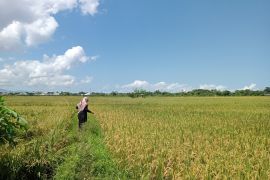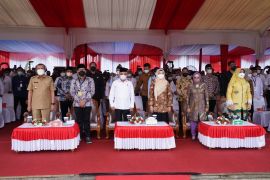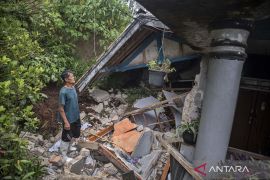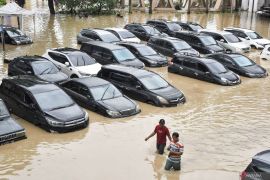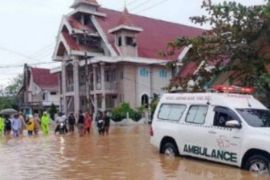There are at least four challenges to implementing disaster and climate resilience policiesJakarta (ANTARA) -
The implementation of disaster and climate resilience policies have faced several challenges, including less-than-optimal cross-sectoral and multi-party support, an official from the National Development Planning Board (Bappenas) has said.
"There are at least four challenges to implementing disaster and climate resilience policies," Arifin Rudiyanto noted during a discussion themed 'Building the Resilience of Shoreline Community', organized by the National Disaster Mitigation Agency (BNPB) here on Thursday.
"The first one is the lack of cross-sectoral and multi-party support at the sub-national, national, and international level," he elaborated.
In addition, there are also other issues such as a lack of convergence between climate resilience construction and disaster risk reduction and the minimal stakeholder capacity in handling hydro-meteorological incidents triggered by climate change, he said.
The last issue concerns funding as there is no optimal support yet for alternative and innovative funding framework, both from inside the country and outside, he added.
Climate resilience development involves the realization of the National Mid-Term Development Plan (RPJMN) 2020-2024, Sustainable Development Goals (SDGs), and Sendai Framework for Disaster Risk Reduction, he noted.
"Climate resilience development is a combination of adaptation effort and resilience strengthening to bolster development systems in order to withstand the negative impact of climate danger in terms of social, economical, and ecological aspect," Rudiyanto explained.
He highlighted that 34 percent of 514 districts or cities in Indonesia, or 176 districts or cities, will be prioritized for climate change risk reduction efforts through climate resilience development.
These regions are vulnerable not just because of the rise in ocean surface levels as a result of global warming, he said.
There are several locations that could potentially experience land subsidence, both because of natural movement and exploitation of groundwater, he added.
Related news: Economic growth should be based on building climate resilience: IESR
Related news: BMKG collaborates with ministries for sustainable development
Related news: Proper planning can optimize disaster mitigation: BNPB
"There are at least four challenges to implementing disaster and climate resilience policies," Arifin Rudiyanto noted during a discussion themed 'Building the Resilience of Shoreline Community', organized by the National Disaster Mitigation Agency (BNPB) here on Thursday.
"The first one is the lack of cross-sectoral and multi-party support at the sub-national, national, and international level," he elaborated.
In addition, there are also other issues such as a lack of convergence between climate resilience construction and disaster risk reduction and the minimal stakeholder capacity in handling hydro-meteorological incidents triggered by climate change, he said.
The last issue concerns funding as there is no optimal support yet for alternative and innovative funding framework, both from inside the country and outside, he added.
Climate resilience development involves the realization of the National Mid-Term Development Plan (RPJMN) 2020-2024, Sustainable Development Goals (SDGs), and Sendai Framework for Disaster Risk Reduction, he noted.
"Climate resilience development is a combination of adaptation effort and resilience strengthening to bolster development systems in order to withstand the negative impact of climate danger in terms of social, economical, and ecological aspect," Rudiyanto explained.
He highlighted that 34 percent of 514 districts or cities in Indonesia, or 176 districts or cities, will be prioritized for climate change risk reduction efforts through climate resilience development.
These regions are vulnerable not just because of the rise in ocean surface levels as a result of global warming, he said.
There are several locations that could potentially experience land subsidence, both because of natural movement and exploitation of groundwater, he added.
Related news: Economic growth should be based on building climate resilience: IESR
Related news: BMKG collaborates with ministries for sustainable development
Related news: Proper planning can optimize disaster mitigation: BNPB
Translator: Prisca Triferna, Fadhli Ruhman
Editor: Sri Haryati
Copyright © ANTARA 2021


